I'm trying to find the Thevenin equivalent for part A of this circuit:

I begin by opening the circuit at the dotted line of part A. Then I try to find \$V_{oc}\$ across the two terminals that are open. I can see that the 47kΩ is in series with the 18kΩ since no current flows to the open circuit, and that the 15kΩ is in series with the 33kΩ. However I'm having a lot of trouble redrawing the circuit. Not really sure about how to make it look simpler. Any ideas?

